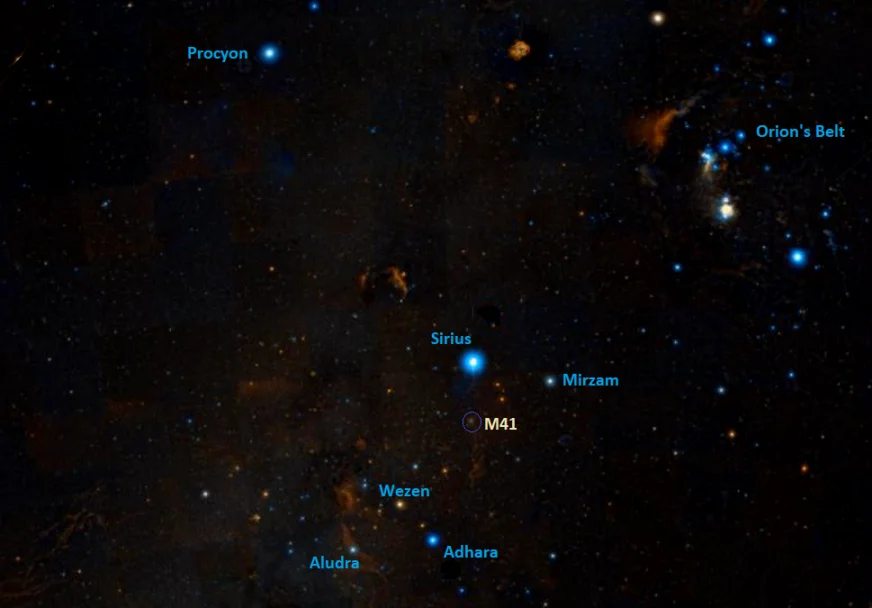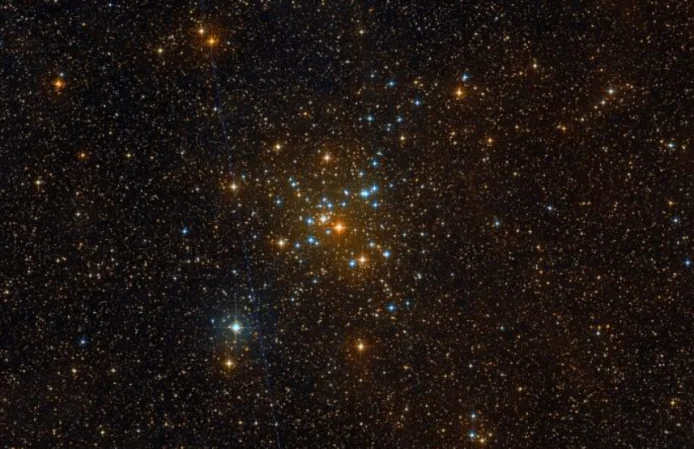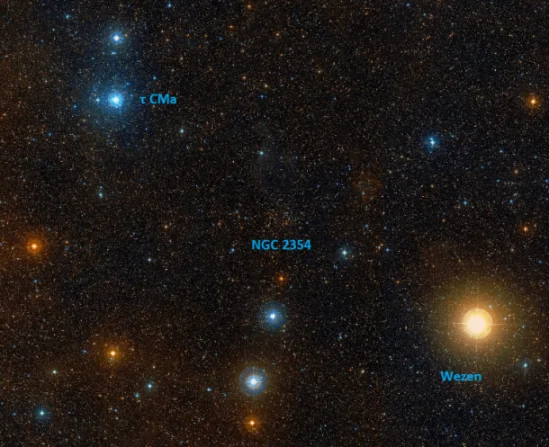Canis Major contains a single Messier object: the open cluster Messier 41. M41 is quite easy to find because it lies only 4 degrees south of Sirius, the brightest star in the sky. In binoculars, the cluster and the star appear in the same field of view.
The cluster lies within the figure of the large sitting dog represented by Canis Major, between Sirius and Mirzam, the stars that mark the dog’s snout and front paw, and the triangle of three stars – Aludra, Wezen and Adhara – that outline its hindquarters and tail. Sirius is found along the imaginary line extended from the stars of Orion’s Belt to the southeast.

M41 stretches across 38 arcminutes of the apparent sky, which is an area comparable to that of the full Moon. The cluster has an apparent magnitude of 4.5 and lies approximately 2,300 light years away. In binoculars, it appears as a large hazy patch of light, while small telescopes can resolve about 50 of the cluster’s brightest stars. The fainter stars in M41 can be resolved in 6- and 8-inch telescopes.

Messier 41 contains about 100 stars and stretches 25-26 light years across. The brightest star in the cluster is a class K3 red giant with an apparent magnitude of 6.3. The star lies near the cluster’s core. The estimated age of M41 is 190 million years.
Canis Major contains several other relatively bright deep sky objects that were not listed in Messier’s catalogue:
- the Tau Canis Majoris Cluster (NGC 2362) – a young open cluster with an apparent magnitude of 3.8 and an apparent size of 6 arcminutes, located just northeast of Wezen
- NGC 2354 – an open cluster with an apparent magnitude of 6.5, located 2 degrees southwest of the Tau Canis Majoris Cluster
- Caroline’s Cluster (NGC 2360) – a magnitude 7.2 open cluster 13 arcminutes across, appearing east of Muliphein
- Thor’s Helmet (NGC 2359) – an emission nebula located about 8 degrees northeast of Sirius, best seen in larger (10-inch) telescopes
- NGC 2207 and IC 2163 – a pair of interacting spiral galaxies with apparent magnitudes of 12.2 and 11.6, located about 3.5 degrees south of Mirzam

Messier 41 and other deep sky objects in Canis Major are best seen during the northern hemisphere winter, when the constellation rises high in the evening sky.